|
Bergoglio is a common Italian surname from the Piedemont region of Italy, although in this case, this man is called Jorge (Giorgio, in Italian) and he was born in Argentina. Yes, that Jorge Bergoglio, also known as Pope Francis. In the last few months, there has been a uprising and controversy when a video went viral--of Pope Francis pulling his ringed hand away from people as he meets. People are angry because HE isn't showing any respect for the Church or its traditions. The video that caused this controversy was from video footage of meeting of pilgrims after the Pope celebrated Mass in the Holy House in Loreto, Italy, on March 25, 2019. In this short video, Pope Francis appears to pull his hand away each time a person approaches to greet him and kiss his hand or ring. But this video didn't exactly show everything that happened that day. In fact, when approached by nuns, in every instance, he allowed them to kiss his hand or ring. But, when it came to the lay people that day, he pulled his hand away from each... (Watch the complete video on this page) Baciamano The custom of kissing the ring of the pope or a bishop has been a gesture of respect in the Church for longer than can be remembered, but likely started in the late Middle Ages. In fact, when I was a child, I remember having to kiss our bishop's ring whenever he visited our church. This ring-kissing is called baciamano (in Italian, literally "hand kiss”), but in practice it refers to kissing the ring worn by any bishop, but especially the Papal Ring of the Fisherman worn by every Pope. Each Pope chooses, designs or selects his own ring to wear during his Papacy. The Fisherman’s Ring is one of several rings typically worn by the Roman pontiff. The ring takes its name from its image of St. Peter as a fisherman, which became the standard design around the mid-15th century. The first record of the ring’s use was on two letters of Clement IV in 1265 and 1266, used as a wax seal in private letters in place of the official lead seal used for solemn papal documents. In 1842, use of the ring and wax seal were replaced by a stamp, but each Pope still receives a unique Ring of the Fisherman at the start of his papacy, which is then destroyed soon after his death. Pope Francis doesn't always wear the Papal Ring, and while outside of official Papal ceremonies, Francis is typically seen wearing only his episcopal ring. It is customary to kiss the ring of any bishop, and being that the Pope also holds the title of Bishop of Rome, he is also technically a Bishop. Kissing a Bishop's ring is done out of reverence for his dignity as a successor of the apostles, and the hand of a priest, as it has been anointed with chrism to consecrate the Body of Christ. The custom of baciamano started to change with St. Paul VI in the last decades of the 20th century, when he eliminated other forms of showing Papal obedience and subservience, such as kissing the pope’s foot, shoulder, and cheek. Kissing the Pope's ring was starting to fall from favor. In the past, one typically bowed while kissing the ring, but in later years, the bowing has also started to disappear.
Some Vatican insiders claim that Francis retreats from traditional Vatican Court Customs, wanting to further simplify the ceremonial by omitting the greeting of genuflection and kissing his ring. He sees this as a lessen to the people of his Church that he is also a common man, and only Christ Himself is worth of such respect. He will still allow those "of the cloth", such as nuns and priests to kiss his hand/ring (as is seen in the unedited video of the event in question). He is respecting the internal hierarchy of the Catholic Church in doing this. The Pope is in fact, their leader. But he does not wish everyday people to treat him as if he were some sort of religious idol. He is an "everyman Pope". So he often pulls pack his hand as a lesson for us not to idolize him. Other Reasons for Pulling Back His Hand Still others, point out that the Pope is a senior citizen, and as such, has a weakened immune system. It's prudent to lessen the contact with parishioners, especially during events when the Pope is likely to have thousands try to kiss his hand. Even politicians on their political hand-shaking and baby-kissing campaigns have their aides squirt their palms with Purell after each public event. Anecdotally, I will confess to changing my habits when food shopping when my son was a toddler, riding in the supermarket cart while I shopped. In the first couple of years, it seemed both of us were getting sick a lot... 4-6 times a year we would catch colds. But then I started to use the antiseptic wipes available in supermarkets to wipe down the handle of our shopping cart, and we magically stopped catching colds! I think we can all give the Pope the benefit of doubt on this matter. He is an older man and can catch colds like any other mortal human. He is also a humble Pope and doesn't like being treated like a king or monarch or even the embodiment of the Christ Himself. I think this can be a teachable moment. Use wipes at the supermarket --my lesson. The Pope is just a man, like all others --Francis' lesson. We are all children of God while we are in this mortal form. Germs DO exist and are transferred instantly by touch. There, I've said my piece. Now, does anyone have a Wipe? --Jerry Finzi  "Orario" means "hours" "Orario" means "hours" Most Italians work long hours. In the average business, their weekday hours are 9.00 am (9:00) to 1.00 pm (13:00) and from 2.30 pm (14:30) to 6.00 pm (18:00), from Monday to Friday. They use the 24 hour military clock. Many people will work well after 6.00 pm, especially true for managers and entrepreneurs. This is one of the reasons they take long lunches--called riposa--typically from 1 pm until 3 - 3:30 pm. Even most churches are closed from noon until 3 pm. There are many jobs which have their workers come in from Monday through Saturday, but they only work from 8.00 am to 2.00 pm. When a business is closed on Saturday, they might also add a few afternoon hours for their employees. According to Italian labor laws, the number of hours worked in a week can reach a maximum of 40. The average time, including overtime, cannot exceed 48 hours. Workers in Italy are guaranteed a minimum of 4 weeks paid days off for vacation and holidays. Some unions negotiate even longer periods of paid vacation/holiday days off. Lunch breaks are typically shorter in large cities and restaurants are open during the lunch hours. In smaller towns, even restaurants will be closed during riposa because most people prefer to eat at home. (But food is available at "bars", which are open). In almost all cases, many shops, even in large cities, will be closed for riposa with their hours listed on the door. In addition, during the August holiday season of Ferragosto, when workers take from 2-4 weeks off for holiday, you might see a sign on shop or restaurant doors saying "Chiuso Per Ferie" (Closed for Vacation) with a date when they will return from vacation. Most Italians take a two week vacation (called Ferragosto on August 15th) either before or after August 15th. Most large industries are closed during August and many museums and restaurants might also be closed. Many people take the entire month to rest and relax before returning to work and school on September 4th. The other period of time when holidays might affect normal business hours is the period between Christmas, New Year's Day and the Epiphany on January 6. Since Italy is a Catholic country, many national holidays coincide with religious holidays.
In addition, all Italian cities celebrate the patron saint as a legal holiday. All businesses are closed on...
 Schillizzi Schillizzi Enzo Schillizzi (b 1955 - d 2009) lived in the small Albanian-Italian village of San Costantino Albanese above the banks of the Sarmento River. The artist spent almost all his life in this small village just outside of Potenza, painting the local life and culture in murals all around the area. His work focused on the cultural symbolism of arbëresh tradition and folklore, especially on religious rites, for example, illustrating Nusazit, the pyrotechnic puppets of the saints day of San Constantino Albanese. Proud of the region's heritage, he recorded his impressions of the romantic and violent history of Basilicata and the briganti, robber/rebels who ran rampant during the post-unification period if Italy. Other subjects were his own interpretations of of painters such as Velasquez and Picasso. Some works are childlike, with indeed a Picasso-esque loose hand, while others show his extraordinary skill as a draftsman. After his untimely death, in July 2009, an effort has been made to research, document and restore and preserve his wonderful murals in addition to paintings privately owned. His colors often remind the viewer of the muted and natural palette from Basilicata itself--wheat, the varied tones of greens from the mountains and valleys, and the more vibrant colors of sky and flora. This research has been possible through the efforts of family and friends, who helped to identify and search out several paintings and gain permission of the owners to allow photographing them for posterity. Despite his works being dispersed in various places, a significant number still remain in San Costantino in private collections houses and in public spaces. Some his more complex works remind me of the work of Mexican muralist Diego Rivera while others have a mix of abstract and cubism in their compositions. After seeing his work, I'm convinced that his imagery would be well suited to ceramics and mosaic tiles. The town of San Constantino is blessed to have much of his work on public display, honoring their wonderful heritage. --Jerry Finzi |
On AMAZON:
|


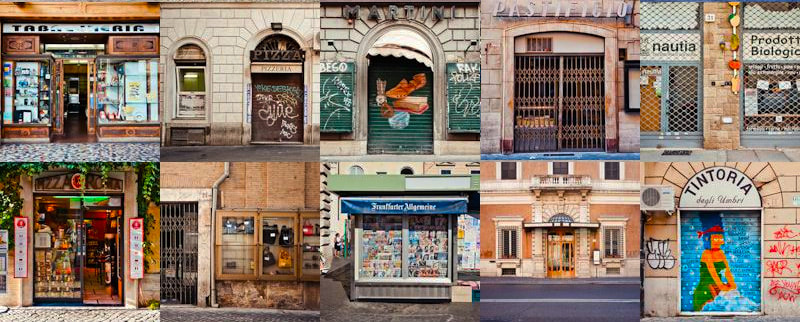
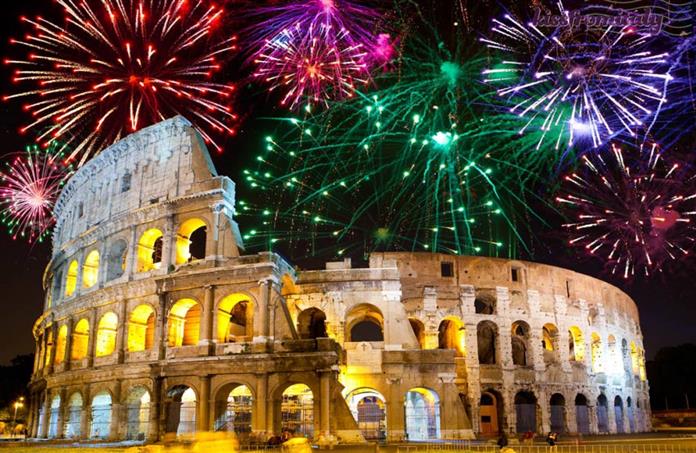




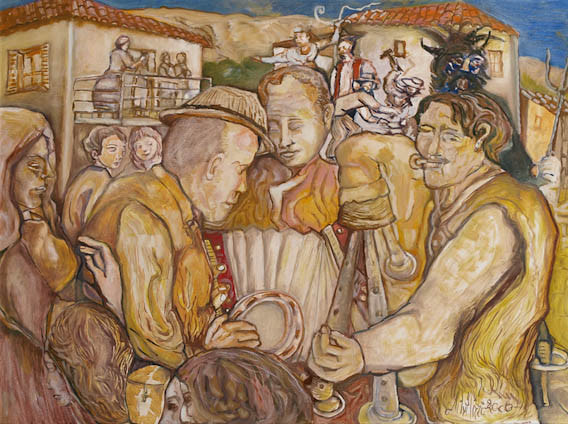

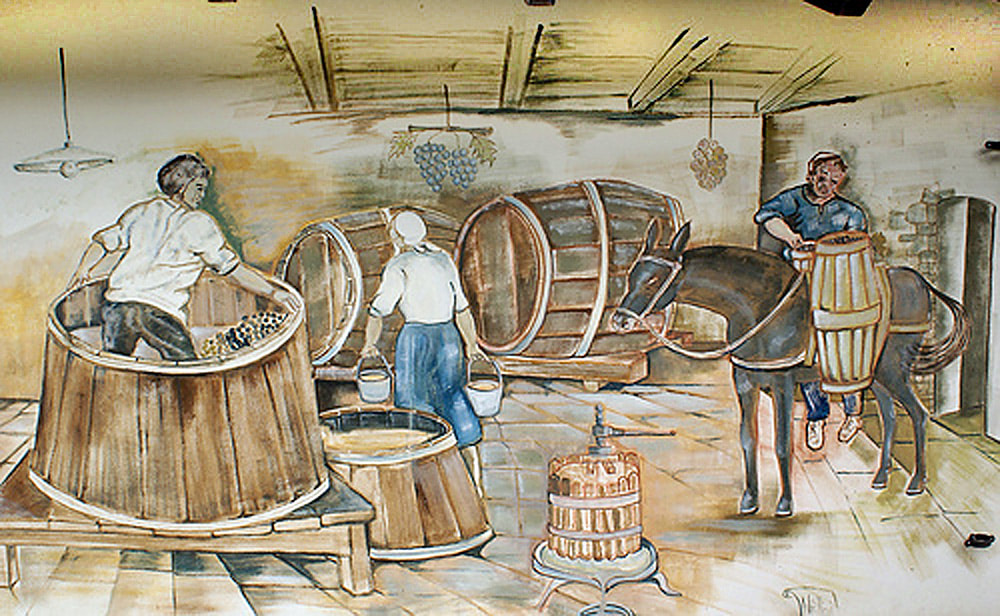




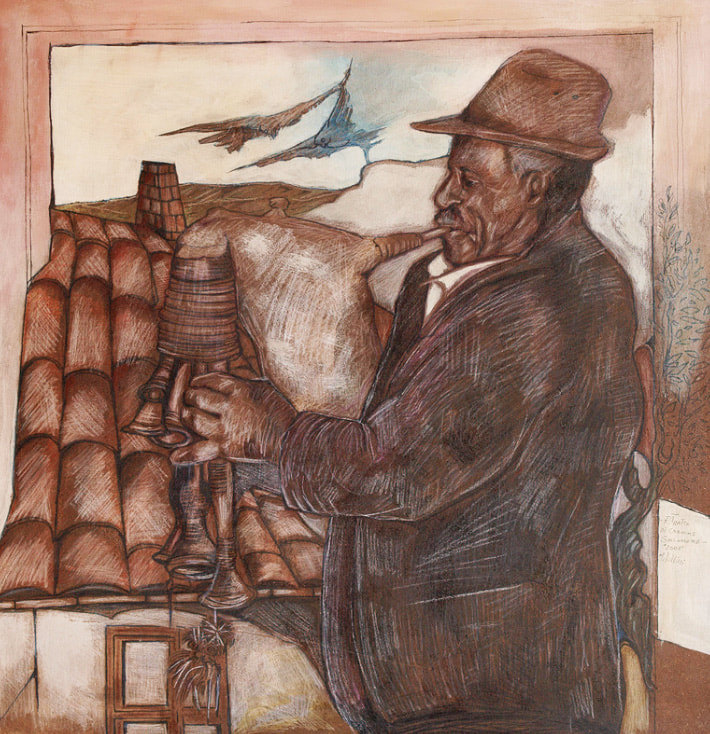







 RSS Feed
RSS Feed

